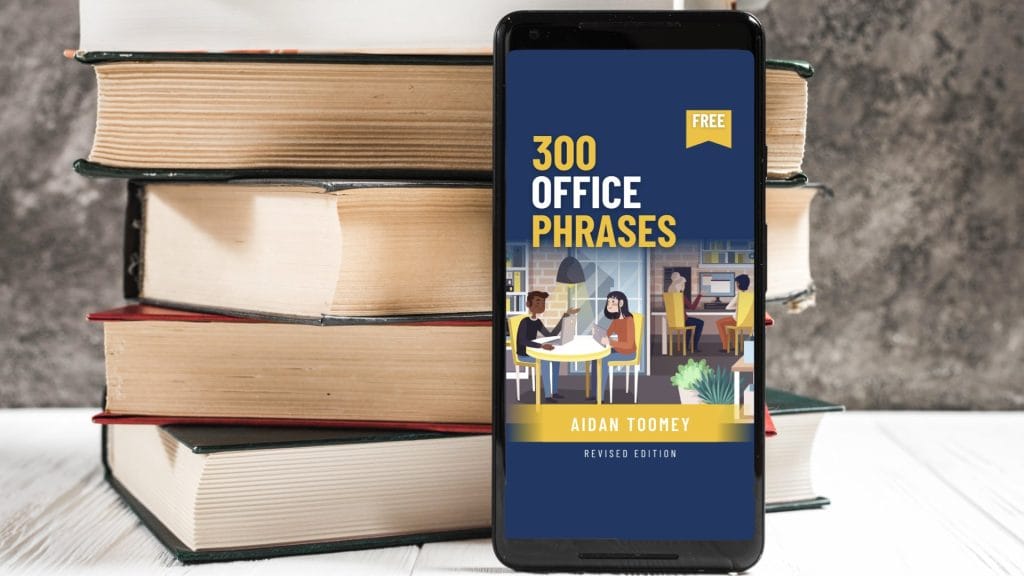
Are you a non-native English speaker who freezes when asked to explain your digital marketing strategy in meetings? Do you struggle to find the right words when discussing campaign results with international colleagues?
You’re not alone. In today’s global business environment, mastering digital marketing terminology in English isn’t just helpful—it’s essential for career advancement. This comprehensive guide will equip you with 10 powerful digital marketing collocations that will help you communicate more confidently, impress clients and colleagues, and demonstrate your professional expertise in any business setting.
Why These Digital Marketing Collocations Will Transform Your Professional Communication
For non-native English speakers working in marketing, using the right terminology can:
- Boost your credibility when presenting campaign results to clients
- Enhance your confidence during team meetings and strategy discussions
- Improve your job prospects in international marketing roles
- Ensure clarity when explaining complex marketing concepts
As one of our training participants shared: “Learning these specific collocations completely changed how my team perceived my expertise. I went from being hesitant in meetings to confidently leading digital marketing discussions.”
Watch Our Business English Video Tutorial
For non-native speakers, hearing proper pronunciation is crucial. Our video explains these digital marketing collocations in clear, accessible Business English:
Prefer reading? Continue below for our detailed explanation of each collocation with practical examples you can use immediately in your workplace.
Digital Marketing Acronyms Explained
Before diving into the collocations, let’s clarify some common acronyms you’ll encounter in digital marketing:
SEO (Search Engine Optimisation): The process of improving a website to increase its visibility in search engines like Google when users search for relevant terms.
B2B (Business-to-Business): Marketing strategies and transactions conducted between businesses rather than between a business and individual consumers.
KPI (Key Performance Indicator): Measurable values that demonstrate how effectively a company is achieving key business objectives.
ROI (Return on Investment): A performance measure used to evaluate the efficiency or profitability of an investment, calculated by dividing the benefit of an investment by its cost.
ROAS (Return on Ad Spend): A marketing metric that measures the revenue generated for every pound spent on advertising.
CTA (Call to Action): A prompt on a website, advertisement, or piece of content that encourages the audience to take a specific action (like “Sign up,” “Learn more,” or “Buy now”).
Q1/Q2/Q3/Q4 (Quarter 1, 2, 3, 4): The three-month periods that divide a company’s financial year.
10 Powerful Digital Marketing Collocations Every Professional Should Master
1. Generate Leads
What it means: To create new potential customer contacts through strategic marketing activities.
How to use it professionally:
- “Our content marketing campaign generated 500 qualified leads last quarter, exceeding our targets by 25%.”
- “The webinar series has been our most effective channel for generating high-quality leads in the B2B sector.”
Pro tip: When discussing lead generation in meetings, always specify the quality and relevance of leads, not just quantity, to demonstrate strategic thinking.
2. Drive Traffic
What it means: To direct visitors to a website or digital content through various marketing channels.
How to use it professionally:
- “The SEO optimisations we implemented have driven a 40% increase in organic traffic to our product pages.”
- “Our goal this quarter is to drive more qualified traffic rather than focusing solely on visitor numbers.”
Pro tip: Pair this collocation with specific metrics to showcase your analytical abilities.
3. Track Metrics
What it means: To monitor and analyse key performance indicators that measure marketing success.
How to use it professionally:
- “We track several key metrics daily, including conversion rate, bounce rate, and cost per acquisition.”
- “The new dashboard allows us to track campaign metrics in real-time, enabling faster optimisation.”
Pro tip: Specify which metrics you’re tracking and why they matter to demonstrate your strategic approach.
4. Conduct Research
What it means: To systematically investigate market conditions, customer preferences, or competitor activities.
How to use it professionally:
- “Before launching the campaign, we conducted extensive market research to identify our audience’s pain points.”
- “The insights from the research we conducted revealed an untapped segment we hadn’t previously considered.”
Pro tip: Mention specific research methodologies to showcase your thoroughness and expertise.
5. Build Relationships
What it means: To develop and nurture connections with customers, influencers, or partners over time.
How to use it professionally:
- “Our content strategy focuses on building long-term relationships rather than generating quick sales.”
- “Social media has been instrumental in building authentic relationships with our community of users.”
Pro tip: Emphasise the quality and longevity of relationships to demonstrate your understanding of customer lifetime value.
6. Drive Sales
What it means: To increase revenue through marketing activities that encourage purchases.
How to use it professionally:
- “The email remarketing campaign drove a 32% increase in sales from abandoned carts.”
- “We’re testing different call-to-action variations to drive sales more effectively through our product pages.”
Pro tip: Always connect sales results to specific marketing activities to demonstrate clear causation.
7. Capture Attention
What it means: To create content or campaigns that stand out and engage the target audience.
How to use it professionally:
- “The interactive infographic captured attention much more effectively than our traditional static content.”
- “In today’s crowded digital space, we need more innovative ways to capture our audience’s attention.”
Pro tip: Discuss attention in terms of measurable engagement metrics for more impact in business discussions.
8. Raise Awareness
What it means: To increase public knowledge about a brand, product, or issue through marketing efforts.
How to use it professionally:
- “The influencer partnership successfully raised awareness among the Gen Z demographic we’ve been targeting.”
- “Our primary objective for Q1 is to raise brand awareness in the new markets we’re entering.”
Pro tip: Specify how you measure awareness (surveys, brand mention tracking, etc.) to demonstrate your analytical approach.
9. Reach Goals
What it means: To achieve predetermined marketing objectives through strategic activities.
How to use it professionally:
- “By optimising our conversion funnel, we reached our revenue goals two weeks ahead of schedule.”
- “The cross-channel approach helped us reach our engagement goals despite the limited budget.”
Pro tip: Be specific about which goals were reached and how they align with broader business objectives.
10. Maximise Impact
What it means: To optimise marketing efforts to achieve the greatest possible results from available resources.
How to use it professionally:
- “We reallocated the budget to maximise the impact of our highest-performing channels.”
- “A/B testing has been crucial in helping us maximise the impact of our landing page design.”
Pro tip: Connect impact maximisation to efficiency metrics like ROI or ROAS to demonstrate business acumen.
Real-World Application: Digital Marketing Meeting Scenario
Here’s how these collocations might be used in a typical marketing team meeting:
Marketing Director: “Let’s review our Q3 performance. How are we doing with lead generation?”
You: “Our content marketing strategy has generated 20% more leads than last quarter. The webinar series has been particularly effective at capturing attention from decision-makers in our target companies.”
Marketing Director: “Great. What about website performance?”
You: “The SEO optimisations have driven significant traffic increases. We’re tracking metrics daily and have seen a 15% improvement in conversion rates. This has directly driven sales up by 22% compared to Q2.”
Marketing Director: “What’s our plan for Q4?”
You: “Based on the research we conducted last month, we’ve identified two new audience segments. We’re developing a strategy to raise awareness in these groups while continuing to build relationships with our existing customers. We believe this balanced approach will help us reach our annual goals and maximise the impact of our remaining budget.”
Try This Activity to Test Your Learning
Personalised One-to-One Training
Need customised support for your specific marketing role? My one-to-one Business English training helps you:
- Communicate complex marketing concepts with clarity and confidence
- Present campaign results persuasively to clients and stakeholders
- Master the specific terminology of your marketing specialisation
With over 7 years of teaching experience and 20+ years in the corporate world, I provide personalised sessions to help marketing professionals succeed in international business environments.
Book Your Free 15-Minute Consultation →
FREE Resources to Support Your Learning
Grab our Ultimate 300 Business English Phrases for Communication in the Office ebook below. These phrases include many useful expressions for marketing discussions and presentations.
Looking for more Business English tips, courses, and free resources? Visit our LinkTree page to access everything in one place: https://linktr.ee/toomeybusinessenglish
If You Liked This Article, Try These Next!
- Strengthen Customer Relationships: 45 Socialising Phrases for Business
Learn essential phrases to build stronger connections with clients and partners in your digital marketing network. - How to Perfect Office Communication: 10 Essential Business English Phrases for Success
Master key phrases to communicate your marketing strategies clearly with colleagues and stakeholders. - Powerful Business English: How to Describe Charts, Graphs and Visuals in Presentations
Essential vocabulary for presenting your digital marketing data and campaign results effectively.
FREE! THE ULTIMATE 300 BUSINESS ENGLISH PHRASES FOR COMMUNICATION IN THE OFFICE

